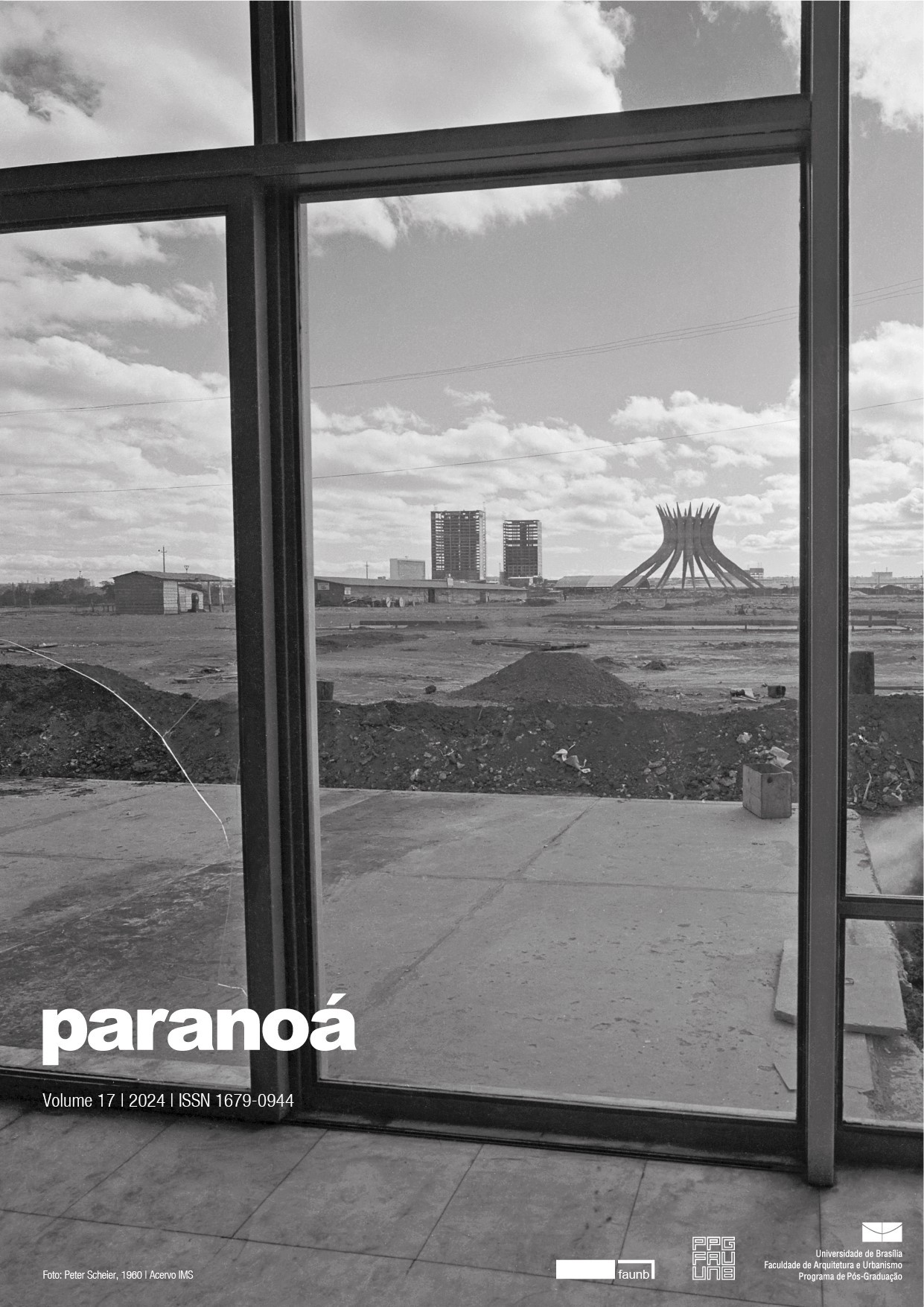Household water use
habits of kitchen sink usage in a single-family residence
DOI:
https://doi.org/10.18830/1679-09442024v17e51336Keywords:
Water usage habits, Sink usage, Water consumptionAbstract
The adoption of actions to promote water conservation in buildings should initially start with an understanding of the usage habits of sanitary appliances, in order to act precisely on the activities that consume the most water and on habits that directly affect water volume. Therefore, the objective of this work is to describe the use of the kitchen sink in a typical Brazilian residential building in the city of Goiânia. To this end, the instant consumption of the kitchen sink in a single-family residence was observed for 9 months by installing a device that allowed for the measurement and recording of instant flow rates. It was found that approximately 21 liters per person per day are consumed, with an average usage volume of around 0.046 L/s and an average time of 17 seconds. It was also observed that, in general, the number of uses and the average flow rate were affected by the considered month, while on weekdays, the average flow rate was affected. Based on these results, it is possible to use probabilistic methods to dimension cold water systems in buildings and promote actions aimed at reducing water consumption in kitchen sinks.
Downloads
References
ADEYEYE, Kemi; SHE, Kaiming; BAÏRI, Abderrahmane. Design factors and functionality matching in sustainability products: A study of eco-showerheads. Journal of Cleaner Production, [S.l.], v. 142, n. 4, p. 4214–4229. Disponível em: https://www.sciencedirect.com/science/article/pii/S0959652616320054. Acesso em: 25 out. 2024
ADEYEYE, Kemi; SHE, Kaiming; MEIRELES, Inês. Beyond the flow rate: the importance of thermal range, flow intensity, and distribution for water-efficient showers. Environmental Science and Pollution Research, [S.l.], v. 27, n. 5, p. 4640–4660. Disponível em: https://www.researchgate.net/publication/338249488_Beyond_the_flow_rate_the_importance_of_thermal_range_flow_intensity_and_distribution_for_water-efficient_showers. Acesso em: 27 out. 2024
ADEYEYE, Kemi; SHE, Kaiming; MEIRELES, Inês. Thermal and flow distribution of showerheads as a method for understanding water user preferences. In: WATEF Conference 2018, 18, 2018, Aveiro. Anais [...]. [S.l.]: ResearchGate, 2018. Disponível em: https://www.researchgate.net/profile/Kemi-Adeyeye-2/publication/328829077_Thermal_and_flow_distribution_of_showerheads_as_a_method_for_understanding_water_user_preferences/links/5be556324585150b2ba90cc6/Thermal-and-flow-distribution-of-showerheads-as-a-method-for-understanding-water-user-preferences.pdf. Acesso em: 27 out. 2024.
ALHARSHA, Iman; MEMON, Fayyaz A.; FARMANI, Raziyeh; HUSSIEN, Wa’El A. An investigation of domestic water consumption in Sirte, Libya. Urban Water Journal, [S.l.], v. 19, n. 9, p. 922–944, 2022. Disponível em: https://www.tandfonline.com/doi/full/10.1080/1573062X.2022.2105239#:~:text=The%20results%20show%20that%20the,255%20l%2Fp%2Fd. Acesso em: 27 out. 2024.
MAZZONI, Filippo; ALVISI, Stefano; FRANCHINI, Marco; MIRJAM, Blokker. Exploiting high-resolution data to investigate the characteristics of water consumption at the end-use level: A Dutch case study. Water Resources and Industry, v. 29, p. 100198, 2023. Disponível em: https://www.sciencedirect.com/science/article/pii/S2212371722000312. Acesso em: 27 out. 2024.
OHNAKA, Tadakatsu; TOCHIHARA, Yutaka; WATANABE, Yumiko. The effects of variation in body temperature on the preferred water temperature and flow rate during showering. Ergonomics, v. 37, n. 3, p. 541–546, 1994. Disponível em: https://www.tandfonline.com/doi/abs/10.1080/00140139408963669. Acesso em: 27 out. 2024.
OKAMOTO, Minami; SATO, Minoru; SHODAI, Yoshihiko. Identifying the Physical Properties of Showers That Influence User Satisfaction to Aid in Developing Water-Saving Showers. Water, v. 7, n. 12, p. 4054–4062, 2015. Disponível em: https://www.researchgate.net/publication/282208421_Identifying_the_Physical_Properties_of_Showers_That_Influence_User_Satisfaction_to_Aid_in_Developing_Water-Saving_Showers. Acesso em: 27 out. 2024.
PAULA, Ruanny Ferreira de. Análise do uso final de água potável em uma edificação unifamiliar na cidade de Goiânia. 2018. 174 f. Dissertação (Mestrado) - Curso de Engenharia Civil, Escola de Engenharia Civil e Ambiental, Universidade Federal de Goiás, Goiânia, 2018.
WONG, Ling Tim; MUI, Kwok Wai; CHAN, Yiu-Wing. Showering Thermal Sensation in Residential Bathrooms. Water, v. 14, n. 19, p. 2940, 2022. Disponível em: https://www.researchgate.net/publication/363703056_Showering_Thermal_Sensation_in_Residential_Bathrooms. Acesso em: 27 out. 2024.
Downloads
Published
How to Cite
Issue
Section
License
Copyright (c) 2024 Paranoá

This work is licensed under a Creative Commons Attribution 4.0 International License.
Autores que publicam nesta revista concordam com os seguintes termos:
- Autores mantém os direitos autorais e concedem à revista o direito de primeira publicação, com o trabalho simultaneamente licenciado sob a Licença Creative Commons Attribution que permite o compartilhamento do trabalho com reconhecimento da autoria e publicação inicial nesta revista. http://creativecommons.org/licenses/by/4.0
- Autores têm autorização para assumir contratos adicionais separadamente, para distribuição não-exclusiva da versão do trabalho publicada nesta revista (ex.: publicar em repositório institucional ou como capítulo de livro), com reconhecimento de autoria e publicação inicial nesta revista.
- Autores têm permissão e são estimulados a publicar e distribuir seu trabalho online (ex.: em repositórios institucionais ou na sua página pessoal) a qualquer ponto antes ou durante o processo editorial, já que isso pode gerar alterações produtivas, bem como aumentar o impacto e a citação do trabalho publicado (Veja O Efeito do Acesso Livre).















